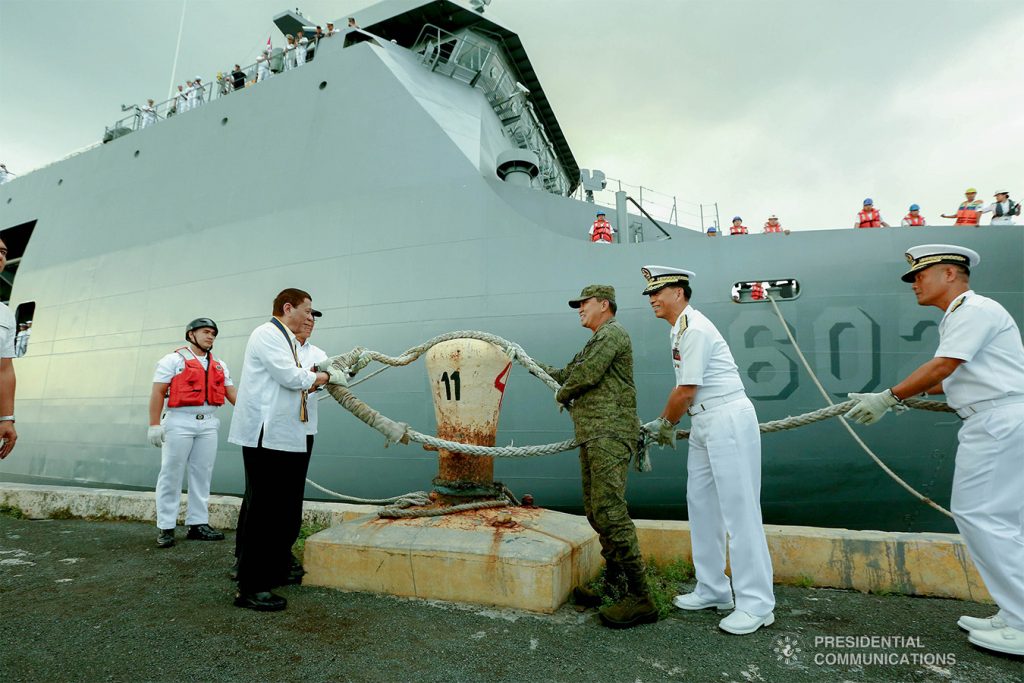US-Iran tension: Is there a policy to address the crisis?

AHEAD OF his Senate impeachment trial, US President Donald Trump ordered an airstrike that killed Iranian general Qassem Soleimani on January 3. The Pentagon said in a statement that Soleimani was planning to attack American diplomats and service members in the Middle East, and that the assassination was meant to deter that “imminent” danger. Iran retaliated on January 7 with a missile attack on two US bases in Iraq. No casualties were recorded. Iran announced that it had considered this the appropriate retaliatory response, leading to the de-escalation of conflict between the two countries.
As with most foreign news, Philippine media understandably looked at the tension from the limited perspective of its domestic impact, as government focused on the implications affecting the welfare of overseas Filipino workers (OFWs) in the Middle East, particularly in countries directly affected by the conflict.
As usual, reports followed the official leads, in order of their appearance as sources. In quoting the various officials speaking, the news accounts raised more questions than answers. The disjointed responses of the concerned agencies showed a lack of coordination among the departments involved. And yet, journalists shied away from directly asking how any of these plans were going to work. The piecemeal coverage suggested a frenzy of action, misleading the public to think that the administration was effectively responding to the crisis.
CMFR monitored the coverage of three Manila-based broadsheets (The Philippine Star, Philippine Daily Inquirer, Manila Bulletin), four primetime newscasts (ABS-CBN 2’s TV Patrol, CNN Philippines’ News Night, GMA-7’s 24 Oras and TV5’s Aksyon) and selected online news sites from January 3 to 12.
What policy?
Media closely followed government officials as these held their separate briefings about what they would do. As different personalities talked separately on the issue within the week, coverage seemed a mere hodgepodge of different scenarios, with no sense of where all these plans converged.
A few reports noted that the president had created a special working committee. But the committee was seemingly not working together. With no single briefing involving all the officials concerned, it was not clear who was really in charge.
Newscasts aired clips of press briefings of Labor Secretary Silvestre Bello III; Environment Secretary Roy Cimatu, who was appointed by President Duterte as special envoy to the Middle East; and Defense Secretary Delfin Lorenzana. Each one had a plan which seemed disconnected to other efforts in government.
Bello was talking about providing livelihood programs for thousands of returning OFWs. Both Cimatu and Lorenzana focused on the problem of transporting some 1,600 Filipinos, talking alternatively and separately about the use of military vessels to ferry migrant workers from Iraq. Meanwhile, broadcast news l aired a press briefing clip of Bello saying he wanted to talk to his “kind” counterpart in Qatar to ask whether its government could lend the Philippines planes for the evacuation. Transportation Secretary Arthur Tugade was also quoted in some print and online reports assuring the help of commercial airlines in the repatriation.
Everyone seemed to have something to say and media gladly obliged. Some members of the House and Senate were also featured in the reports as discussing emergency funds for the planned evacuation while in recess. The police, meanwhile, had another concern, which was to keep track of terror groups that might commit “sympathy attacks.”
Curiously, Foreign Affairs Secretary Teddy Boy Locsin, Jr. was not as visible as expected since it would be the diplomatic missions in the Middle East which would have to serve as hubs for the operations. Reports incorporated his tweets about the US attack in some reports. But the foreign minister surfaced in the news when he confronted protesters outside of the DFA on January 10, challenging them to a fistfight.
Media completely missed asking whether there was any comprehensive strategy guiding the different actions. There seemed to be none and it would have been part of factual coverage to make this observation. Clearly, the policy for mandatory repatriation should have been evaluated as the threat of war waned.
Reporters also failed to raise the responsibilities of the host governments. What bilateral agreements could be invoked to address the security concerns of Filipino employees? Employers in the different countries seemed entirely left out of the discussion. With OFWs repatriated without job prospects, no reports probed the sustainability of bringing them home.
In this instance, the government was obviously caught unprepared to deal with the crisis triggered by tension in the region. It would have been fair and accurate to point this out as any flashpoint in the Middle East could heat up to place OFWs in harm’s way. At press time, the first batch of OFWs has yet to make their way home. But Taal Volcano’s eruption on January 13, the grand plan may be put on indefinite hold.
Leave a Reply